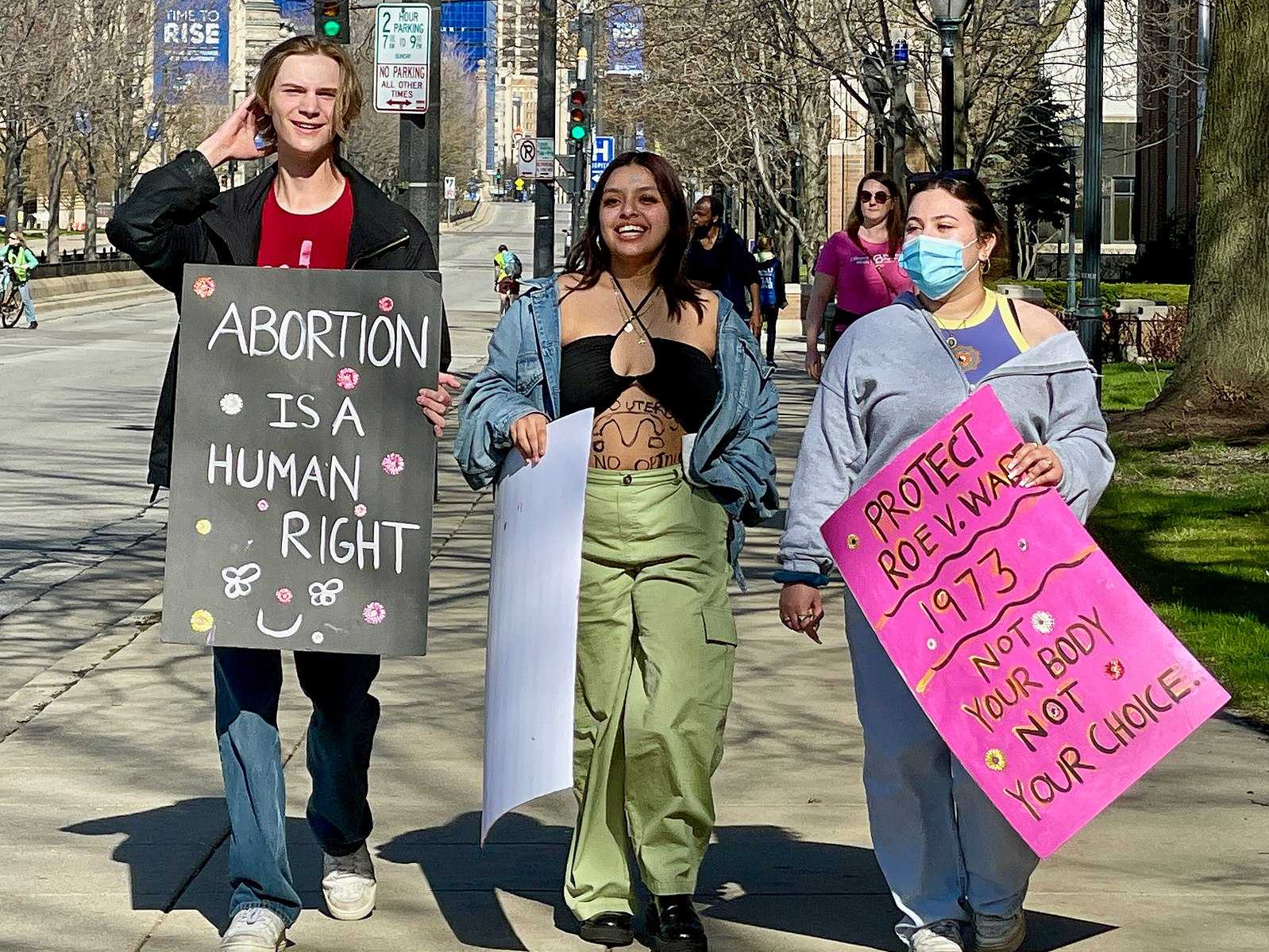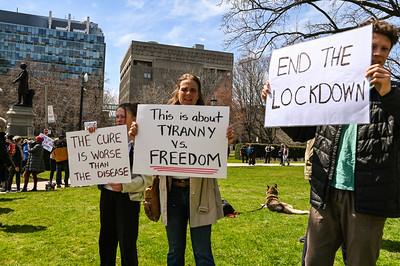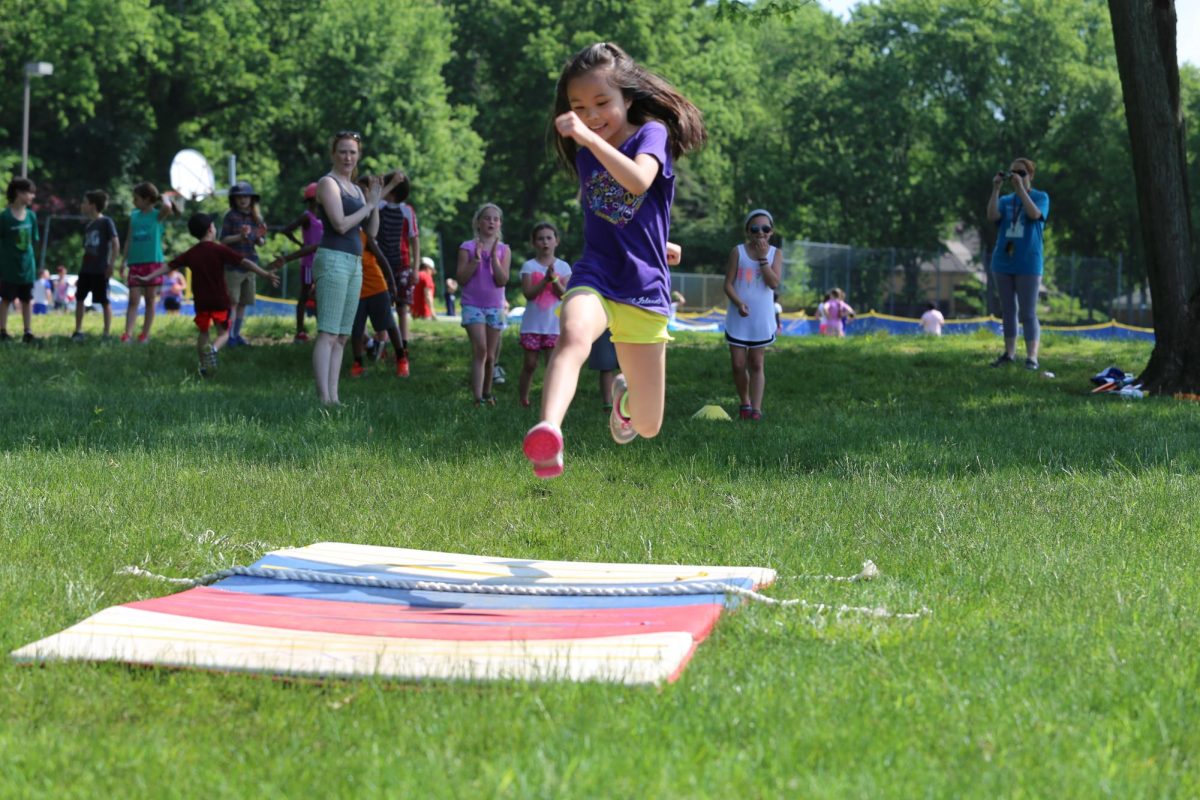“These are things the entire staff should know,” an MFS faculty member expressed. The Opioid Epidemic is relevant to adolescents and should absolutely be discussed in high schools.
The Opioid Crisis in the United States has risen to the level of a public health emergency and continues to remain at the forefront of our national dialogue, driven by the increase in overdose deaths over the last two decades. It has been reported that 91 Americans lose their lives every day due to overdosing on opioids
While overdose deaths among teenagers are lower than they are in adults, the statistics regarding adolescent misuse and addiction remain dramatic. The Centers for Disease Control published an incidence of nearly 17% of high school students misusing prescription drugs and 2.1% admitted to experimenting with heroin at least once in their lives. In addition, the American Society of Addiction Medicine found in 2015 that 168,000 adolescents reported being addicted to opioids.
All opioids are chemically-related compounds that act on receptors in the central and peripheral nervous system to reduce the sensation of the brain, but also can produce euphoric experiences in the brain. The United States consumes 80% of the world’s supply of opioids, making access to prescription opioids–oxycodone, hydrocodone codeine, morphine, and more–a significant risk factor, particularly because these medications are often over-prescribed and much of the medication received for pain management goes unused. For example, one study found that half of all opioid prescriptions for wisdom teeth extraction remained unused 3 weeks after surgery and much of the adolescent misuse occurs when receiving these prescribed medications from relatives or friends. Compounding this issue is the fact that adolescent opioid prescriptions doubled from 1994 to 2007, and it has been shown that the legitimate use of prescription opioids use in high school students increased their risk of future misuse by 33%.
Most opioid addictions, however, stem from other substance abuse. An example of this is Jason Good, a recovered opioid addict. His path to addiction, like many others, started with drinking and smoking in high school. You can read more about his story here.
Good reflected that “it always starts out fine. You know, because when you use drugs and you drink alcohol, I mean, you get an immediate reward for doing so. And so, yeah, initially, it’s fun. For me, it started as ‘let’s go out and party and drink and get f****d up and do it over?’ That’s the initial war. A lot of my friends didn’t get addicted, right, so they could go do whatever on the weekend and then on Monday go to class and be able to not pick [substances] up again for another couple of weeks. For me, it just became a need on a daily basis because of what it did for me. It was a psychological problem and eventually turned into something much bigger than just drinking.”
A survey of high school students showed that most students who experiment with opioids also mixed these drugs with other substances, compounding their effect and increasing the risk of overdose. In addition, street drugs are often “cut” with other chemicals or illicit drugs, adding to their potency and adverse effects. While death from opioid overdose is catastrophic for adolescents and their families, teens who use and abuse these drugs are at significant risk for long-term medical problems associated with addiction and intravenous drug use such as HIV, hepatitis, and endocarditis.
The effects, both mental and physical, that opioid addiction has on one’s life cannot be overstated. Good touched on the effects his addiction had on his life: “Once my addiction was really bad, I would only hang out with people that were doing the same thing I was. But after a while, I didn’t hang out with anybody, and I was just doing what I was doing by myself. And yeah, it takes a toll on every aspect of your life, whether it’s your friends or your family. You know, my grades were crap for a while because everything just becomes less important than the drug that you’re abusing. So that became the most important thing imaginable to me because I didn’t want to feel the way I used to feel sober.”
He added, “When you destroy relationships [with friends and family] to that degree, you ruin that trust. It took me five years of being sober to actually develop a positive, good, healthy relationship with my parents again to where they actually trusted that I was actually on a better path because I put them through years and years and years of fearing something would go wrong. Like, you know, the phone would ring and my mom would shoot through the roof. And I didn’t take responsibility for that. I was able to eventually mend my relationship with my family, but I had really lost all of my friends long before I got sober.”
The risk of becoming addicted to opioids is even higher for adolescents than when Good was in high school. Substances, such as marijuana, being laced with fentanyl is at an all-time high; teenagers could become addicted to opioids without being aware of taking them.
Brenda Conlan, a drug abuse prevention specialist, explained the dangers of laced drugs: “There are kids who overdose on fentanyl, and, usually, people in your age group like 12 to 20 don’t understand the purity of what they’ve bought. They are using drugs on purpose thinking they’re trying ecstasy or cocaine, but they’re actually using opiates. That’s how people are dying.” You can read more about Conlan and her work here.
The national focus in combating the Opioid Epidemic has been mostly centered on intervention and treatment for those addicted to these substances as well as ways to decrease access to prescription opioids. Developing effective campaigns to educate adolescents in school regarding the reduction of opioid use and prevention of misuse is a critical component of tackling this problem. This is particularly important for at-risk adolescent populations such as those with pre-existing mental health challenges. Survey data suggested that youth with major depressive illness were twice as likely to misuse medications and that 61% of those who responded that they used opioids did so to relieve anxiety and stress.
There are no simple solutions to the Opioid Epidemic, and pre-existing solutions tend to lean more toward recovery rather than prevention. Opioids are some of the most dangerous substances, yet are some of the hardest to identify when being used. Identifying that someone is high on an opioid can be tougher than spotting someone who’s drunk or using marijuana. A study from Michigan State University found that, out of 4,600 participants, 32% could not identify the symptoms of opioid misuse. This creates an unsafe environment for those abusing and at risk of an overdose.
When an MFS Upper School student was asked if they would be able to spot any signs or symptoms of opioid abuse, they could only identify one: hyperalertness. But, even then, this student recognizes that understanding the basics is not enough: “I feel like hyperalertness could also be from a number of different things, not just opioids, right? And because of that, even if you were a little educated, it might be hard to tell. It’s like I was saying, the reason that I wouldn’t be able to say anything besides being hyper is because I would assume at least that a lot of opioids would affect you differently.”
The main reason why many can’t identify symptoms is because of the lack of education about opioids. It’s a common occurrence for many to leave opioid addiction in the back of their minds, especially when concerning teenagers, because they do not know of anybody using them. But, that doesn’t mean that the problem should be disregarded.
Another MFS student reflected on this, stating, “If something’s really rare, it shouldn’t just be ignored, right? Why do you think we have fire drills every month? It’s not like we have a fire every year. Oftentimes, there’s never a fire in somebody’s whole time in high school, right? But still, we are being excessively trained for that because it’s a big deal when it does happen. And, give it enough time, somebody will take opioids and there could be an overdose. So it’s important for teachers to be able to diagnose it and know how to work with it.”
In the past, drug education has not been effective in helping students who are actually experiencing addiction. Many programs are not in favor of supporting students in changing and improving their health but rather instill meaningless and ineffective fear into students.
Looking back on his high school experience, Good reflects on his school’s drug education and its overall failure: “We had the D.A.R.E. program and it was an abysmal failure. Because it was part of like, ‘just say no.’ And, you know, that is not how these drugs work. They didn’t offer any kind of support or any kind of factual information, there was nothing real about what they were teaching us. It was a lot of like, fear-mongering and like, ‘oh, my God, if we do drugs, this will happen’ just wasn’t realistic for us as kids. And it didn’t make a lot of sense as to like, why shouldn’t we do drugs? It’s just that the D.A.R.E. program just effectively did nothing.”
An issue of this magnitude needs to be talked about and taught through a method where students will be supported and not criticized or ignored. Not only will such discussion broaden others’ perspectives, but it could also save many lives.
Works Cited:
Center for Behavioral Health Statistics and Quality (2016). Key substance use and mental health indicators in the United States: results from the 2015 National Survey on Drug Use and Health (HHS Publication No SMA 16-4984, NSDUH H-51 http://www.samhsa.gov/data/.
Centers for Disease Control and Prevention (2012). Estimated HIV incidence in the United States, 2017-2010. HIV Surveillance Supplemental Report, 17(4). https://www.cdc.gov/hiv/pdf/statistcs_2012_HIV_Surveillance_Report_vol_24.pdf
Centers for Disease Control and Prevention (August 30, 2017). Drug overdose deaths in the United States continue to increase in 2015 https://www.cdc.gov/drugoverdose/epidemic/index.html
Cole c, Jones L, McVeigh J, Kichman A, Syed O, Bellis M (2010). A guide to adulterants, bulking agents, and other contaminants found in illicit drugs. Liverpool, UK Centre for Public Health. http://www.cph.org.uk/wp-content/uploads/2012/08/cut-a-guide-to-the-adulterants-bulking-agents-and-other-contaminants-found-in-illicit-drugs.pdf
Hazeldon Betty Ford Foundation and the Christine Foundation (April 30, 2015). Youth Opidod Study: Attitudes and Usage, Young Adults Age 18 to 24 in the United States. https://marychristiefoundation.org/core/uploads/2015/04/Youth-Opiod_Survey_Report.pdf
Manchikanti L, Singh A. Therapeutic opioids: a ten-year perspective on the complexities and complications of escalating use, abuse, and nonmedical use of opioids. Pain Physician 2008: 11(2 Suppl): S63-S88.
Mendell, Gary. “Signs of Opioid Addiction.” Shatterproof, https://www.shatterproof.org/blog/signs-opioid-addiction#:~:text=A%20new%20study%20from%20Michigan,who%27s%20drunk%2C%20or%20using%20marijuana.
Markiewicz J, Swanberg K, Weis M. Awareness, Education, and Collaboration: Promising school-based opioid prevention approaches. Substance Abuse and Mental Health Services Administration
Youth Risk Behavior Surveillance Survey (2015). Centers for Disease Control and Prevention, June 10, 2016


















